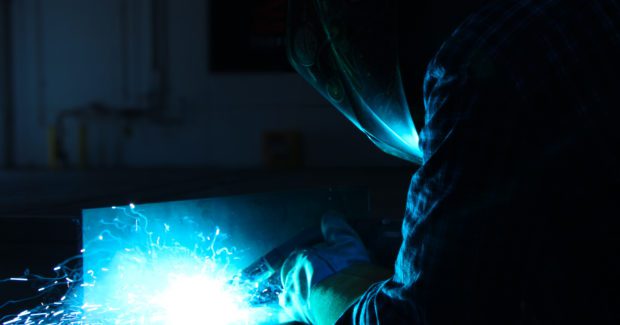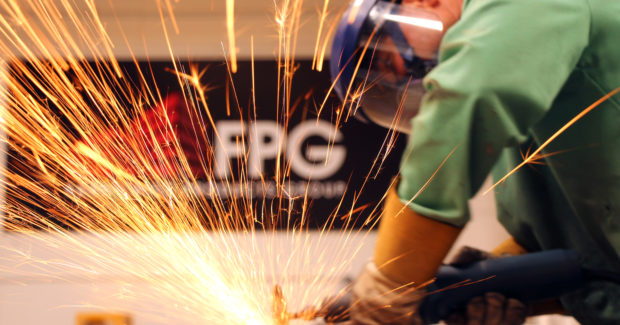Take Your Weld Quality to the Next Level
Two certified welders who work for a Midwest custom fabricator that designs and manufactures premium architectural systems and components share their tips for avoiding common mistakes that contribute to weld failure.
Posted: July 30, 2020
BY BRIDGETTE BURDI & JAMES MADERA
A high-quality weld is a critical element in fabrication regardless of its role in the final product. For a weld to be considered “high-quality,” it must meet the requirements concerning strength, appearance, and a uniform dimension according to the print. If any of these three factors isn’t up to par, the weld could fail.
Concerning the required strength, the amperage and voltage used must be considered as it dictates whether the weld can penetrate the base material accordingly. Without good penetration, it isn’t going to be a quality weld. The dimensional length and face of the weld also needs to be correct based on the print. If the weld is too small, it may fail.
It’s very easy to tell when a weld hasn’t been performed well. During a visual inspection, porosity (or surface pores), undercut, underfill, cold lap, cracks, and pits can be discovered. If any of these are found, the welder will fail the inspection. The weld could also have a dramatic change in color and surface texture, which is different than how it usually looks, if the joint was welded too hot. This could lead to warpage and misalignment to the welded object.
Some common mistakes include creating too big or small of a weld size and pulling away too fast at the finishing end of the weld. This can create cracks and/or pits. A welder should check the size of their weld using a fillet gauge. As for when the arc has stopped, best practice is to hold the nozzle or cup there for a few seconds before pulling away. All these mistakes can be avoided if the welder follows the correct procedure according to the welding process being used.
Special skills and expertise are required to make premium welded components for the custom fabrication world. However, additional steps can always be taken by the welder to improve weld quality.
Delivering A Better Weld
It’s always important to examine the type of material that’s to be welded. Thickness, length, and metal type are all crucial factors. This will determine machine settings and weld type: MIG – gas metal arc welding (GMAW), TIG – gas tungsten arc welding (GTAW) and stick – shielded metal arc welding (SMAW), among others. Joint type also influences welding position, welding type, and machine settings.
Make sure the material is clean from dirt, oil, paint or anything else that may contaminate the weld. The arc will be interrupted if the material is contaminated, and the weld will look bad and experience functionality issues due to lack of penetration.
Another way to improve welds is through experimentation. Many welders are never willing to try alternative methods. On some newer machines, there are a lot of different settings and modes that are created for various types of situations.
When a welder has some downtime or availability after work, it can be beneficial to get some material out of the scrap bin and experiment. A welder should try out their own ideas as well. For example, experimenting with different volt and amp settings and manipulating the weld from different angles and hand positions can be beneficial.
As with anything else, practice is also recommended. Before starting a project, a welder can get some scrap material with similar properties—if not the exact same material—that will be used in the project. Simulating the weld process and dialing things in before starting on the workpiece can avert problems.
If a machine isn’t welding properly, it’s imperative to determine why. Some welders will continue working because they’re still getting the job done. To make the best possible product in the most efficient way, troubleshooting the issue can make the difference between a good weld and a great one.
On a related note, maintenance is essential to keep the machine running like new. Consult the owner’s manual to maintain peak performance.
Never Stop Learning
Proper training is also essential to consistently producing a high-quality weld. Attending a good trade school is helpful, but can only teach a welder so much. Learning on the job is effective if a company employs a highly skilled welder who can train employees.
Continuing to further one’s education is also essential to becoming the best welder possible. Visiting trade shows to network and see the latest industry advancements is a great way to improve. Attending seminars and reading articles in trade publications about best practices and innovations is also helpful.
A high-quality weld will always be a critical element in fabrication. Learning from colleagues and taking additional steps, such as examining the materials being welded, trying new methods, and maintaining the equipment, can take the quality of a weld to the next level.













